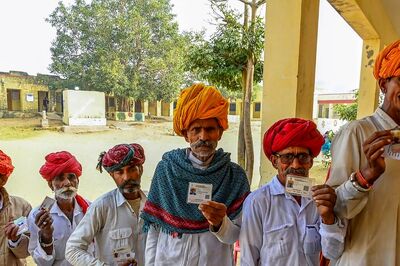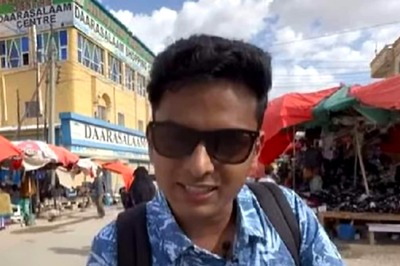
views
Devusinh Chauhan, Minister of State for Communications, in response to queries posed during the winter session of Parliament, shed light on the rise of fake call centres perpetrating fraudulent activities.
Over the past three years, a staggering number of illegal telecom setups — 35 in FY 2021-22, 62 in FY 2022-23, and 65 in FY 2023-24 — have been unearthed, with reports of individuals being defrauded through these channels.
The minister said: “Such illegal setups are used to bypass the International Long Distance Operators (ILDOs) for anti-national activities, cybercrimes and financial frauds etc.”
According to him, the Department of Telecommunications (DoT), in collaboration with Law Enforcement Agencies (LEAs) and Telecom Service Providers (TSPs), has been actively combating these illicit operations. Measures undertaken include directives to ILDOs to block incoming international calls with suspicious or improper Caller Line Identification (CLI). Additionally, DoT has taken steps to block applications facilitating the origination of spoofed calls, preventing their availability on popular app stores.
DoT’s efforts extend to citizen engagement through the Sanchar Saathi portal, enabling the reporting of international calls with misleading Indian CLI and the verification of mobile connections to identify unauthorised subscriptions. Over 13 lakh such connections have been disconnected following this initiative.
Chauhan stated that by utilising advanced technology like Artificial Intelligence and Facial Recognition, DoT has identified and disconnected approximately 55.52 lakh suspicious mobile connections, taking action against more than 70,000 points of sale (SIM agents) involved in selling these illicit connections.
MISUSE OF HEADERS AND MESSAGE TEMPLATES
Furthermore, the minister addressed concerns regarding the misuse of headers and message templates by certain telemarketers. The DoT’s proactive approach involved an AI/ML analysis targeting entities sending SMS through Distributed Ledger Technology (DLT) platforms.
This analysis led to the removal of thousands of Principle Entities (PEs), SMS headers, and content templates—over 20,000 PEs, 30,000 SMS headers, and 1.95 lakh SMS content templates.
TRAI reported over 28,000 instances of header and content template misuse, prompting action from mobile companies to blacklist entities involved. The minister said: “Since 2019, more than 20 Telemarketers, around 500 PEs, more than 3000 SMS Headers, and more than 40000 Content Templates have been blacklisted for sending phishing SMS/Unsolicited Commercial Communications (UCC).”
To counter this, TRAI directed mobile companies to re-verify all headers and content templates on DLT platforms, subsequently deactivating unverified ones. Stringent measures were imposed to ensure compliance with regulations, temporarily deactivating numerous headers and content templates that did not meet the mandated criteria.
Chauhan said: “The Telecom Commercial Communications Customer Preference Regulations (TCCCPR 2018) mandates that Mobile companies must ensure that all commercial communications on their network only take place using registered Headers and Content templates registered by the senders on the DLT platform. Principal Entities (PEs) can send their commercial communications by engaging Registered Telemarketers (RTMs) or directly through the ecosystem developed and established by the Mobile companies.”
“Further, to prevent the transmission of promotional messages through unregistered telemarketers or telemarketers using 10-digit telephone numbers, TRAI issued a direction on February 16, 2023. In compliance with TRAI’s direction, around 4 Lakh Headers and more than 11 Lakh Content Templates have been temporarily deactivated by the Mobile companies,” the minister noted.

















Comments
0 comment